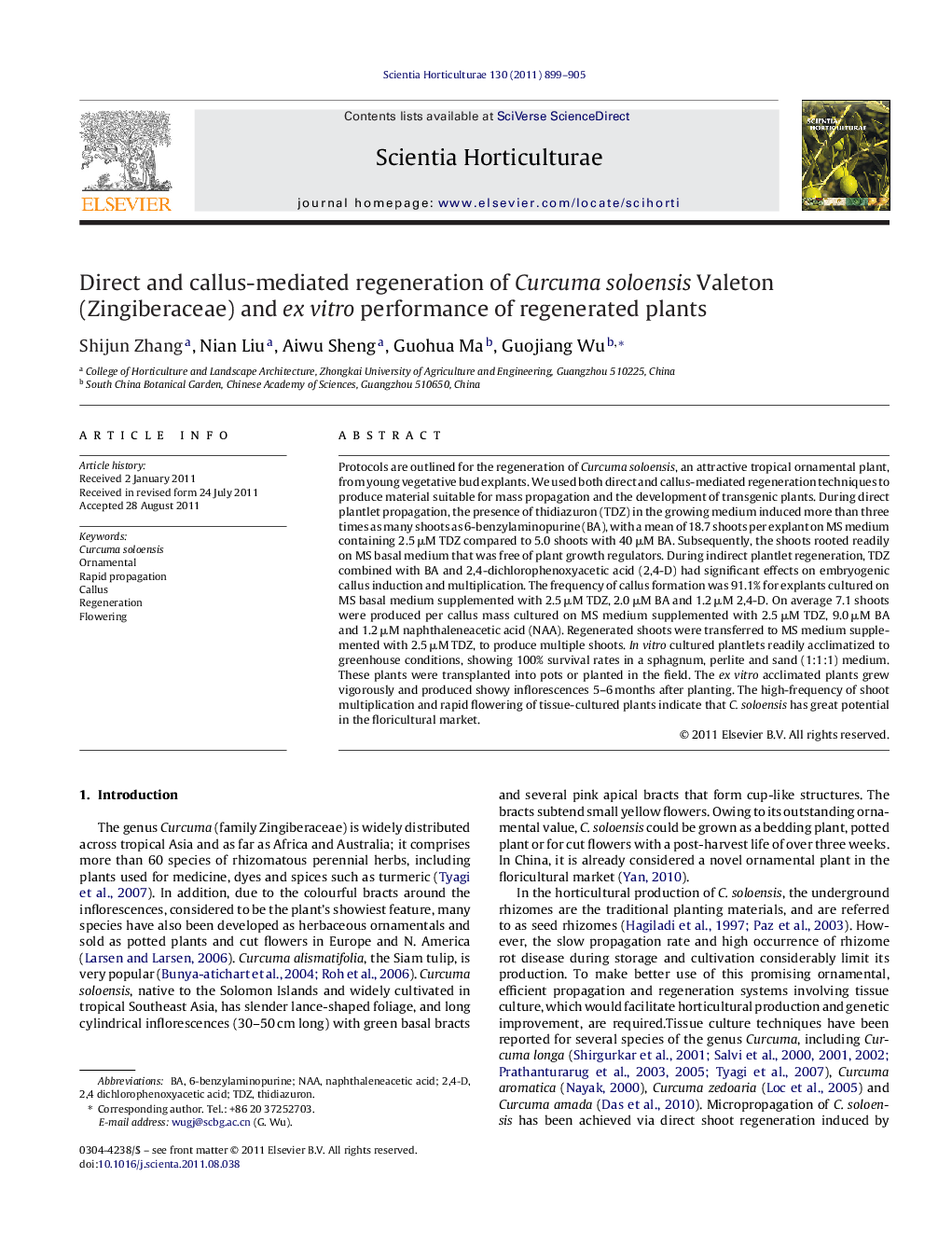| کد مقاله | کد نشریه | سال انتشار | مقاله انگلیسی | نسخه تمام متن |
|---|---|---|---|---|
| 4567903 | 1628868 | 2011 | 7 صفحه PDF | دانلود رایگان |

Protocols are outlined for the regeneration of Curcuma soloensis, an attractive tropical ornamental plant, from young vegetative bud explants. We used both direct and callus-mediated regeneration techniques to produce material suitable for mass propagation and the development of transgenic plants. During direct plantlet propagation, the presence of thidiazuron (TDZ) in the growing medium induced more than three times as many shoots as 6-benzylaminopurine (BA), with a mean of 18.7 shoots per explant on MS medium containing 2.5 μM TDZ compared to 5.0 shoots with 40 μM BA. Subsequently, the shoots rooted readily on MS basal medium that was free of plant growth regulators. During indirect plantlet regeneration, TDZ combined with BA and 2,4-dichlorophenoxyacetic acid (2,4-D) had significant effects on embryogenic callus induction and multiplication. The frequency of callus formation was 91.1% for explants cultured on MS basal medium supplemented with 2.5 μM TDZ, 2.0 μM BA and 1.2 μM 2,4-D. On average 7.1 shoots were produced per callus mass cultured on MS medium supplemented with 2.5 μM TDZ, 9.0 μM BA and 1.2 μM naphthaleneacetic acid (NAA). Regenerated shoots were transferred to MS medium supplemented with 2.5 μM TDZ, to produce multiple shoots. In vitro cultured plantlets readily acclimatized to greenhouse conditions, showing 100% survival rates in a sphagnum, perlite and sand (1:1:1) medium. These plants were transplanted into pots or planted in the field. The ex vitro acclimated plants grew vigorously and produced showy inflorescences 5–6 months after planting. The high-frequency of shoot multiplication and rapid flowering of tissue-cultured plants indicate that C. soloensis has great potential in the floricultural market.
► 2.5 μM TDZ induced the highest shoot multiplication rate of 18.7 shoots/explant.
► The tissue-cultured plants bloomed 6 months after planting.
► TDZ combined with BA and 2,4-D triggered effective callus multiplication.
► The rapid propagation protocol has been used in horticultural production of Curcuma soloensis.
► The callus-mediated protocol will be used for genetic transformation studies in C. soloensis.
Journal: Scientia Horticulturae - Volume 130, Issue 4, 31 October 2011, Pages 899–905